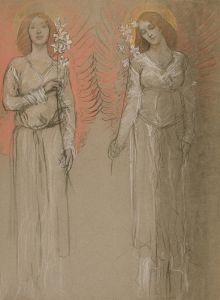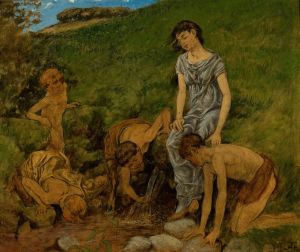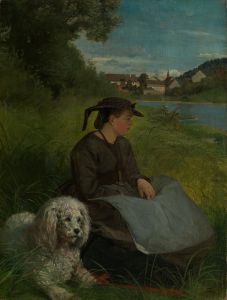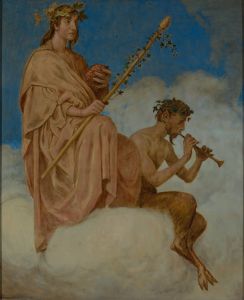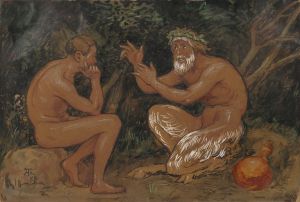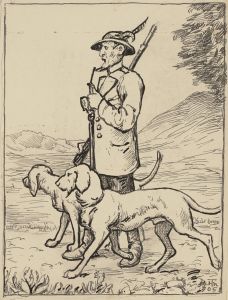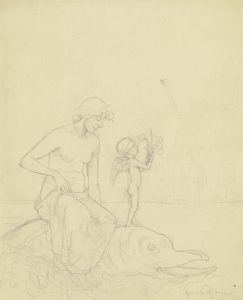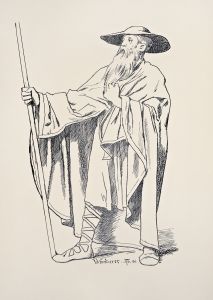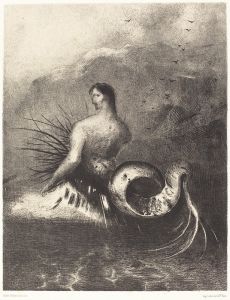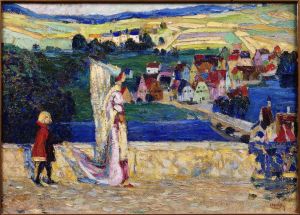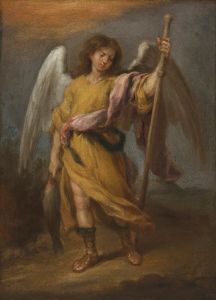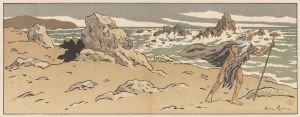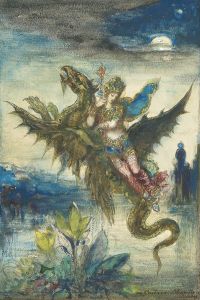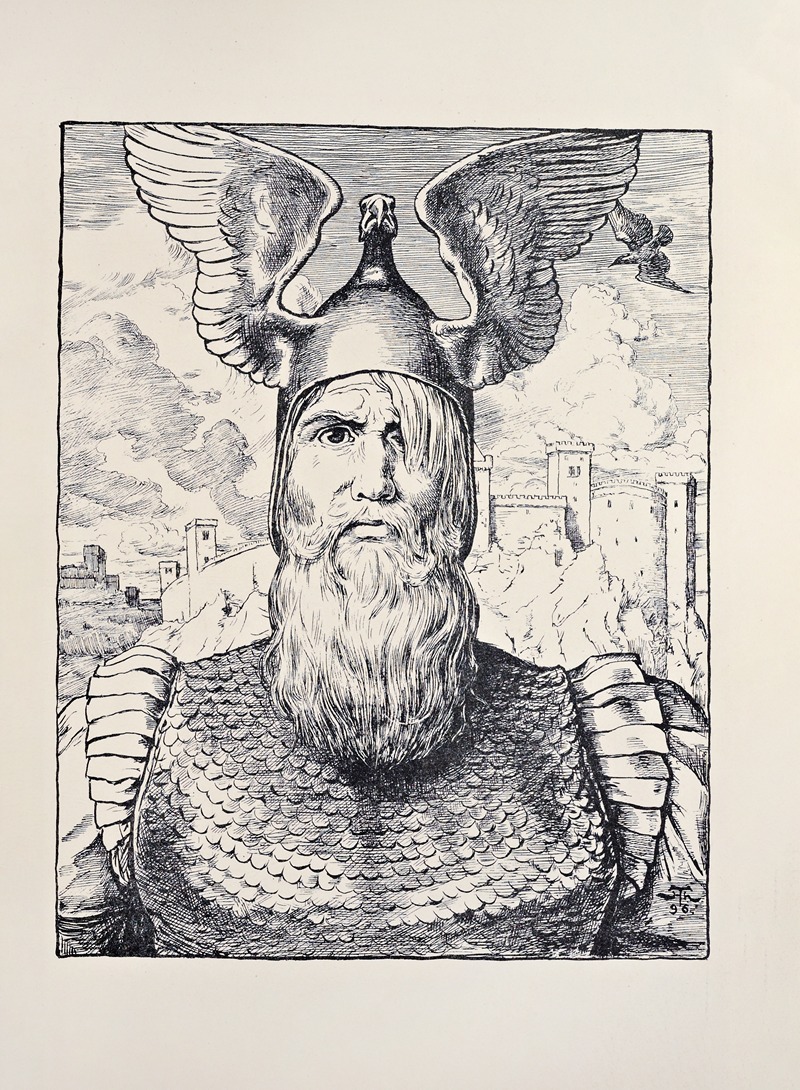
Kopf Wotans
A hand-painted replica of Hans Thoma’s masterpiece Kopf Wotans, meticulously crafted by professional artists to capture the true essence of the original. Each piece is created with museum-quality canvas and rare mineral pigments, carefully painted by experienced artists with delicate brushstrokes and rich, layered colors to perfectly recreate the texture of the original artwork. Unlike machine-printed reproductions, this hand-painted version brings the painting to life, infused with the artist’s emotions and skill in every stroke. Whether for personal collection or home decoration, it instantly elevates the artistic atmosphere of any space.
Hans Thoma was a German painter born on October 2, 1839, in Bernau in the Black Forest region. He is known for his landscapes, portraits, and mythological themes, often drawing inspiration from German folklore and nature. Thoma's work is characterized by a blend of realism and romanticism, and he became a significant figure in the German art scene during the late 19th and early 20th centuries.
One of Thoma's notable works is "Kopf Wotans," which translates to "Head of Wotan." Wotan, also known as Odin in Norse mythology, is a prominent god associated with wisdom, war, and death. He is often depicted as a one-eyed figure, having sacrificed one of his eyes in exchange for wisdom. Wotan is a central figure in Germanic mythology and has been a subject of interest for many artists and writers throughout history.
"Kopf Wotans" reflects Thoma's interest in mythological themes and his ability to capture the essence of legendary figures. The painting portrays the head of Wotan, likely emphasizing his wise and powerful nature. Thoma's depiction may include traditional attributes associated with Wotan, such as a long beard and a solemn expression, which are common in representations of the god.
Hans Thoma's artistic style in "Kopf Wotans" is likely to exhibit his characteristic attention to detail and his skillful use of color and composition. Thoma was known for his ability to blend elements of realism with a romanticized view of nature and mythology, creating works that resonate with a sense of timelessness and depth.
Throughout his career, Thoma was influenced by various artistic movements and figures. He studied at the Karlsruhe Academy of Fine Arts and later in Düsseldorf and Paris, where he was exposed to different styles and techniques. Thoma was also associated with the Munich Secession, a group of artists who sought to break away from traditional academic art and explore new forms of expression.
Thoma's work, including "Kopf Wotans," contributed to the cultural and artistic landscape of his time. His paintings often reflect a deep connection to German cultural heritage and a fascination with the natural world. Thoma's ability to convey complex themes through his art made him a respected figure in the art community.
In addition to his mythological works, Thoma created numerous landscapes and portraits, capturing the beauty of the German countryside and the character of his subjects. His legacy continues to be appreciated for its contribution to German art and its exploration of mythological and natural themes.
Hans Thoma passed away on November 7, 1924, in Karlsruhe, Germany. His works remain an important part of German art history, and "Kopf Wotans" stands as a testament to his skill and his interest in the rich tapestry of mythology and folklore.





